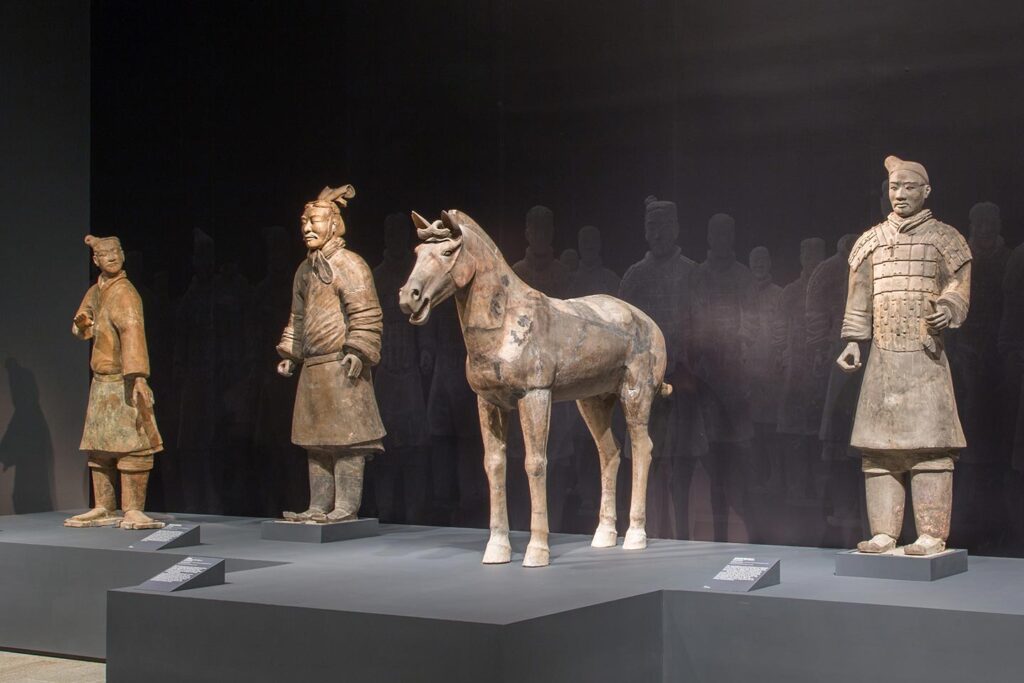This content discusses the artistic representations of the military throughout history. It explores different periods and cultures, starting from ancient cave paintings and Egyptian artworks, then moving to the Classical period and its idealized heroism, Medieval art with its religious symbolism and chivalry, and the Renaissance and Baroque periods emphasizing realism and drama. The content also covers the 19th and 20th centuries, highlighting the role of war in modern society through artworks that depict the devastating impact of warfare. Finally, it discusses contemporary art and how it reflects on war, offering social commentary and critique. Overall, the content aims to explore the human fascination with conflict and the impact of war on society through art.
Painted Warriors: Exploring Artistic Representations of the Military Throughout History
Introduction
Art has served as a powerful medium for capturing the essence of military life and warfare throughout history. From ancient cave paintings depicting hunters and warriors to Renaissance masterpieces showcasing battles and heroic figures, artists have long been fascinated by the imagery and stories of military conquest. This article aims to delve into the realm of artistic representations of the military, exploring how different cultures and periods have portrayed warriors and their exploits.
Ancient Art: The Birth of Warrior Art
The earliest known artistic depictions of warriors can be traced back to prehistoric cave paintings. The ancient Egyptians also left behind an impressive record of military art, with pharaohs commissioning vast works on the walls of their temples and tombs. These pieces depicted victorious battles, military processions, and symbolic representations of power and authority.
Classical Period: Idealized Heroism
During the Classical Period, artists sought to portray military figures as idealized heroes, embodying virtuous qualities such as strength, courage, and leadership. Greek pottery, for example, showcased scenes from famous battles and mythical conflicts, often depicting men in heroic poses, poised for action. The Romans adopted a similar artistic style, emphasizing the bravery and discipline of their soldiers through sculptures and reliefs.
Medieval Art: Religious Symbolism and Chivalry
In the Middle Ages, art took on a more religious and symbolic tone. Medieval warriors were often depicted as Christian soldiers, engaged in holy wars or battling mythical creatures. The art of this era also frequently portrayed knights, championing the values of chivalry, honor, and loyalty. Illuminated manuscripts and tapestries showcased epic sagas and legendary battles fought by these noble warriors.
Renaissance and Baroque: Realism and Drama
The Renaissance saw a shift towards more realistic and detailed portrayals of military subjects. Artists such as Leonardo da Vinci and Albrecht Dürer meticulously studied the anatomy and equipment of soldiers, aiming for accurate renditions in their artwork. The era also witnessed a surge in battle scenes and depictions of military leaders, often with dramatic lighting and intense emotional expressions. Gianlorenzo Bernini, a prominent Baroque sculptor, created powerful sculptures that captured the dynamic energy of combat.
19th to 20th Century: The Role of War in Modern Society
The 19th and 20th centuries represented a tumultuous time in world history, marked by revolutions, industrialization, and two major world wars. Artists of this period explored the darker aspects of warfare, highlighting the devastating impact on society and individuals. Paintings like Goya’s “The Third of May 1808” and Picasso’s “Guernica” exhibited the horrors and tragedies of war, appealing to the viewer’s conscience.
Contemporary Art: Reflection and Critique
In contemporary art, the focus shifted towards reflecting on the nature of war and questioning the role of the military in society. Artists like Jenny Holzer and Banksy have employed various mediums to challenge traditional notions of heroism, power, and violence, offering social commentary and critique. Their works invite viewers to confront the uncomfortable realities and moral dilemmas associated with warfare.
Conclusion
Throughout history, art has provided a visual record of the military, capturing the heroism, tragedy, and complexities of warfare. From ancient cave paintings to contemporary installations, artists have sought to depict warriors in various ways, reflecting the values, beliefs, and societal shifts of their time. Exploring artistic representations of the military throughout history allows us to gain insight into the human fascination with conflict, the changing perception of warriors, and the impact of war on society.
